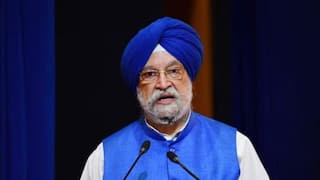Want To Get A Gold Loan? See How Prices Of The Metal Impact Your Chances
The major principle of gold loans is that the borrower must pledge their gold jewellery as collateral against the loan and once it is repaid, the lender returns the pledged jewellery to the borrower

By Amit Shroff
Gold prices directly influence gold loans. An upward movement in gold prices adds momentum to gold loans as borrowers unlock the potential of their invested gold for liquidity. Rising gold prices also make lenders’ portfolios safer, as they can maintain a good loan-to-value ratio. Read further to learn how fluctuating gold prices impact gold loans.
Gold loans have increasingly become a popular and smart choice for meeting unexpected financial needs. Many borrowers focus primarily on the interest rates, processing fees, and other charges associated with gold loans. However, some prudent individuals also strategize to minimise their gold loan costs. Despite this, a crucial aspect that is often overlooked is the impact of gold prices on gold loans. The fluctuation in gold prices significantly affects both the interest rates of gold loans and their overall demand.
A fundamental principle of gold loans is that the borrower must pledge their gold jewellery as collateral against the loan amount. Once the loan is fully repaid, the lender returns the pledged gold jewellery to the borrower. Throughout the loan tenure, the pledged gold is securely stored, as detailed in a formal agreement adhering to the prevailing norms.
Loan-to-Value (LTV)
One important concept in gold loans is the loan-to-value (LTV) ratio. The LTV ratio determines the maximum loan amount that a lender can approve based on the total value of the gold pledged by the borrower. The Reserve Bank of India (RBI) has set a cap on the LTV ratio for gold loans at 75 per cent for both non-banking financial institutions (NBFCs) and banks. For example, if a borrower pledges gold worth Rs 1 lakh, the maximum loan amount they can receive is Rs 75,000.
Also Read : UPI Payment Limit Hiked To Rs 5 Lakh For These Transactions Starting Today
LTV and Gold Prices
The relationship between LTV and gold prices is critical. If we consider the same scenario and assume that the price of gold increases by 10 per cent, the value of the pledged gold would rise from Rs 1 lakh to Rs 1.10 lakh. Consequently, with the increased gold price, the LTV of 75 per cent would translate to a higher loan amount of Rs 82,500. Thus, borrowers could secure a larger loan amount when gold prices increase.
Conversely, if gold prices decline, the loan value decreases as well. For instance, if the value of the pledged gold drops from Rs 1 lakh to Rs 90,000, the maximum loan amount the borrower could obtain would be Rs 67,500. This inverse relationship underscores the importance of gold prices in determining the loan value.
In summary, gold loans offer a viable solution for unplanned financial needs, with several factors influencing their cost and value. Interest rates, processing fees, and other charges are primary considerations for borrowers. However, understanding the impact of gold prices on gold loans is equally essential. The LTV ratio, capped at 75 per cent by the RBI, directly correlates with the value of the pledged gold. As gold prices rise, borrowers can secure higher loan amounts, while a decrease in gold prices results in lower loan values. By keeping an eye on gold price trends, borrowers can make more informed decisions and potentially maximize their loan benefits.
(The author is the CEO of Arvog and has over 13 years of experience in financial services, specializing in Credit and Risk Management, Operations, Product Development, and ALM management.)
[Disclaimer: The opinions, beliefs, and views expressed by the various authors and forum participants on this website are personal and do not reflect the opinions, beliefs, and views of ABP News Network Pvt Ltd.]
Trending News
Top Headlines






































